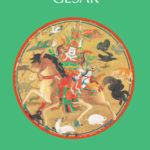
Reports From The Mandala
Head Lama of TNMC
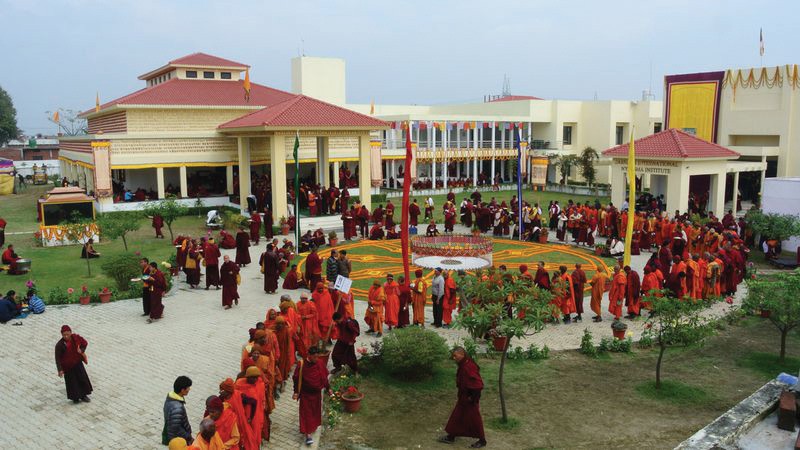
Sarnath International Nyingma Institute: Tibet Peace Ceremony, February 14-17th, 2014.
Over the past decade, the Nyingma Mandala of Organizations has expanded dramatically and in unexpected ways. Existing organizations have continued their activities on behalf of the Dharma and all sentient beings, typically intensifying their efforts. At the same time, at least nine new organizations have been formed, adding new dimensions to the founding Head Lama’s vision.
In the reports that follow, we lay out recent developments throughout the mandala and introduce the work of our new organizations. We start with the work of TNMC, where the Head Lama is most directly involved: Yeshe De, Odiyan, the Light Foundations, and the Sarnath Institute. From there we move on to describe the structure and mission of the Nyingma Association of Mandala Organizations (NAMO), founded in 2011.
We go on to lay out the recent work of the organizations that belong to NAMO. As a structure for presenting this wealth of developments, we start with the organizations located in Sonoma County, then turn to developments in Berkeley, and finally report on the expanding efforts of our international centers, under the direction of Nyingma Centers.
More From This Issue

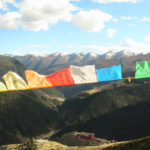
Going Along With Problems
Going Along With ProblemsTarthang Tulku Adapted from an unpublished manuscript
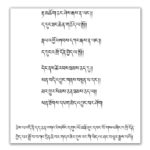
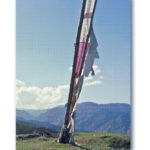
The Historic Dharma Role of Tibet
The Historic Role of Dharma in Tibet By Tarthang TulkuAdapted
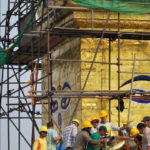
Learning from the Valley
Learning From the Valley Tsering Palmo Gellek The Svayambhu Stupa
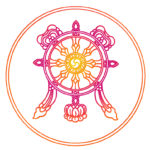
Indestructible Freedom
Indestructable Freedom Tarthang Tulku Like a cornucopia overflowing with creativity,
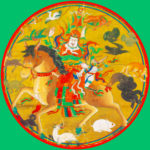
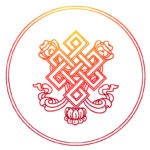

Grounds For Understanding
Grounds For Understanding Claudio Naranjo Claudio Naranjo was a student
Sarnath International Nyingma Institute
Launched in 2008 on land that Rinpoche had purchased more than a decade earlier, the Sarnath Institute aims to build a bridge of goodness between cultures and people in a wide range of disciplines. Its learning focus is the study and dissemination of the Buddhist teachings upheld in the classical languages of Pali, Sanskrit, and Tibetan. But like a blossoming lotus flower, other petals will unfold over time, including the development of traditional Buddhist arts, medicine, culture, and positive engagement in society.
After nearly five years of extensive planning and building, SINI held its official opening on December 13th, 2013. The occasion was marked by an auspicious and sacred gift from the Sri Lankan Sangha, in honor of the meritorious work of LBDFI: a sacred sapling from a cutting of the original Bodhi Tree. Over six hundred monks from the International Tipitaka Chanting Ceremony and two hundred lay practitioners participated, representing nine South Asian countries. Also in attendance were students from the Nyingma centers, who supported the opening of their sister Insitute and participated in a short pilgrimage to Bodhgaya, Rajgir and Nalanda.
Prior to the opening, SINI had already completed a major international project: the painting of a series of murals based on the life of the Buddha in the SINI temple, a project guided by the renowned artist Kaveri Singh and her husband T.J. Singh, with the participation of more than thirty artists from around the world. The largest of the five mural panels measures 45 feet by 23 feet. For a detailed account of this project, see www.paintandpattern.com/sacred-murals-sarnath-india.
One of SINI’s primary goals is to establish a robust language studies program to facilitate the spread of the Dharma. This spring SINI successfully completed its first academic program toward this end, sponsoring and housing an entering class of ten monks and khenpos (abbots), from Tibet. The students joined the program to improve their English, with the ultimate goal of teaching and translating the Dharma internationally. Our experienced teachers were deeply moved by the students’ commitment, and found this teaching as rewarding as any they had ever done.
Another step toward establishing the academic vision of SINI took place in March, 2014, when we hosted an international program on the Four Noble Truths to explore the Buddha’s teachings in today’s world. The five-day program included over twenty participants from India, Thailand, Tibet, the USA, Puerto Rico, Holland, and France, representing an array of professional fields, including renowned scholars, journalists, and psychotherapists. One of the co-creators of the program, George Schouten, made it the basis for an hour-long documentary that aired on June 8, 2014 on the Dutch Buddhist Broadcasting Network: http:// tinyurl.com/l2b2cp9.
SINI has also offered support for the editorial work of the Yeshe De Project by having khenpos in the Language Training Program proofread texts. In another gesture of support, SINI housed the final production process for the Kanjur prayer wheels in 2013, carried out by a team of volunteers from California, our own residents, and many monks from the surrounding area.
In 2013, Tarthang Rinpoche asked SINI to host the first Annual Tibet Peace Ceremony, following the Nyingma Monlam Chenmo in Bodhgaya. Held from February 14-17, 2004, it was attended by over 2,000 monks, nuns, and lay practitioners from all over the Himalayan region and representing all schools. The prayers chanted at the four-day ceremony were dedicated to peace and harmony and to honor those who have sacrificed their lives in the recent self-immolations in Tibet. Thousands of butterlamps were offered daily in their names, and their photographs were posted. In connection with the ceremonies, more than 3,000 Kanjur prayer wheels were distributed at the Dhamekh Stupa. We were especially honored to have the head of the Nyingma School, Taklung Tsetrul Rinpoche, open the ceremony and offer blessings, and to welcome the incarnation of Dudjom. Rinpoche, who blessed the new library. Orgyen Tobgyal Rinpoche presided over the ceremony, and many of his senior monks helped with preparations.
In another arena, in 2014 SINI launched the SINI Sewing Project, an in-house business venture with a staff of seven employees that supports the development of local artisans while also establishing a revenue stream that contributes to SINI’s self-sufficiency. We have established client relations and sold inner meditation cushions to Lotus Design, operated by our European centers. In-house projects include the creation of over 200 sitting cushions for the meditation hall and a large public tent capable of sheltering over 2,000 people. The sewing team also designs and makes traditional Tibetan tents, door hangings, clothing, and meditation cushions, all of which are also available for sale in our new gift shop.
We recently completed two projects documenting our work with the hope of inspiring outside interest and participation. “The Sacred Sapling” is a short video about the sapling-planting ceremony.
The second short video documents the history and inspiration behind the founding of the SINI Institute: https://vimeo.com/94075220. A SINI website will launch in the fall.
Sarnath International Nyingma Institute from Inner World Films on Vimeo.
Improvements to the campus facilities and grounds this year include completion of library shelving and mounting the lantsa script of the Manjushri Namasamgiti on the temple exterior. The lantsa text, (over 7,400 individually cast characters), is identical to that on Vajra Temple at Odiyan. It was manufactured as a sacred art project at the Nyingma Institute in Berkeley and installed by our staff, resident monks and visiting students from Brazil and the Netherlands. The library has now received precious collections of the Nyingma Treasures as well as several versions of the Kanjur, the complete Tanjur, copies of Yeshe De publications, and the entire collection of Dharma Publishing’s English books.
Other improvements include the reception hall and sacred butter lamp house, a conference room, design and installation of twenty outdoor toilets and shower facilities for large-scale events, an expanded and improved septic system, improved waterproofing, repainting of the entire campus, an organized workshop and household storage space, and a commercial-style oven. A new vegetable garden will contribute to self-sufficiency throughout the winter, and landscaping continues on an ongoing basis.
We have made good progress in working with local Indian officials, and we now have our much needed import/ export certificate.
Finally, we have expanded our staff. Dr. R.K. Pandey has joined us to help develop the Aryuvedic garden and provide on-call medical services for the campus, as well as reaching out to the surrounding community. We have three Tibetans on staff, including Ugen Tashi, the capable manager of the Sewing Project. Chef Shankar is our cook, and we have daily help with management, cleaning, gardening, maintenance, guard duties, and electrical work. Ramakant Pandey continues to serve as assistant to the Director.
A planning retreat for Friends of SINI will be held at Ratna Ling in July, and our second course on English for Dharma Purposes starts in September with a cohort of fifteen students. A three-week course on Pali will be offered in November, led by Dr. Mahesh Deokar, head of the Department of Pali at Pune University, a respected scholar renowned for having memorized the entire Buddhist Pali Canon. Finally, the second annual Tibet Peace Monlam is being planned for February, 2015.
Other programs being planned for the near future include developing a recording studio dedicated to the preservation of traditional folk music and nomad songs of Asia, programs on Indian Ayurvedic and Tibetan medicine and herbs, a sacred art program, and pilgrimages to the holy places